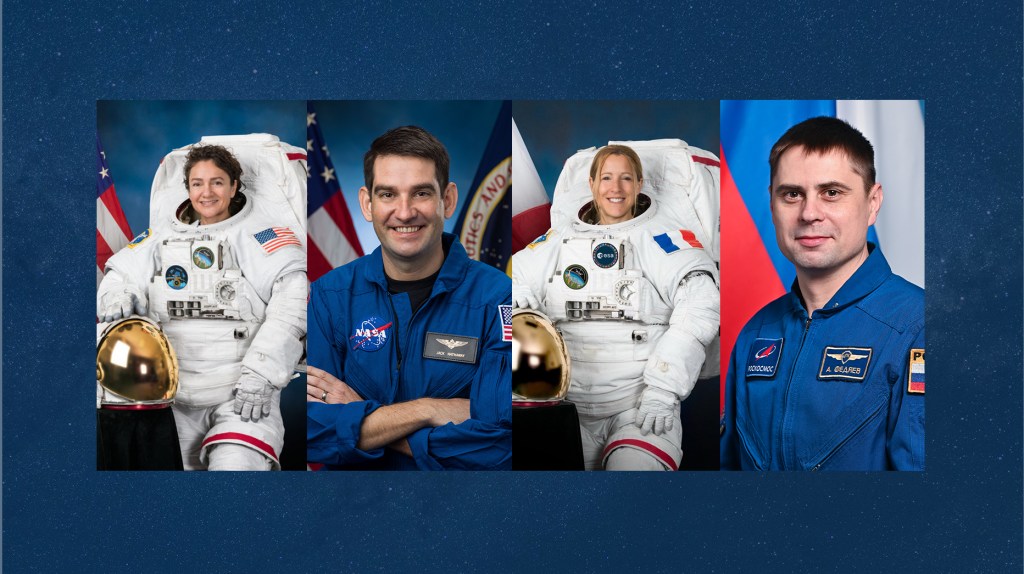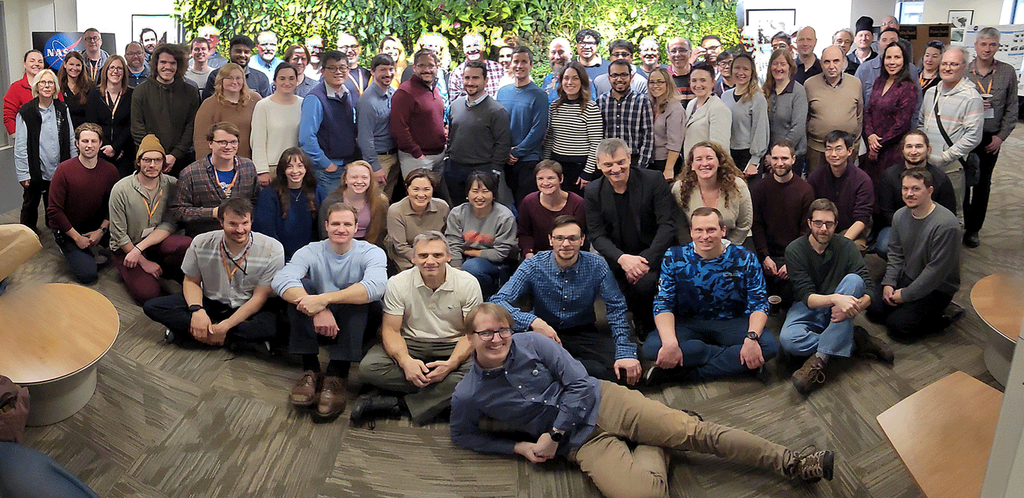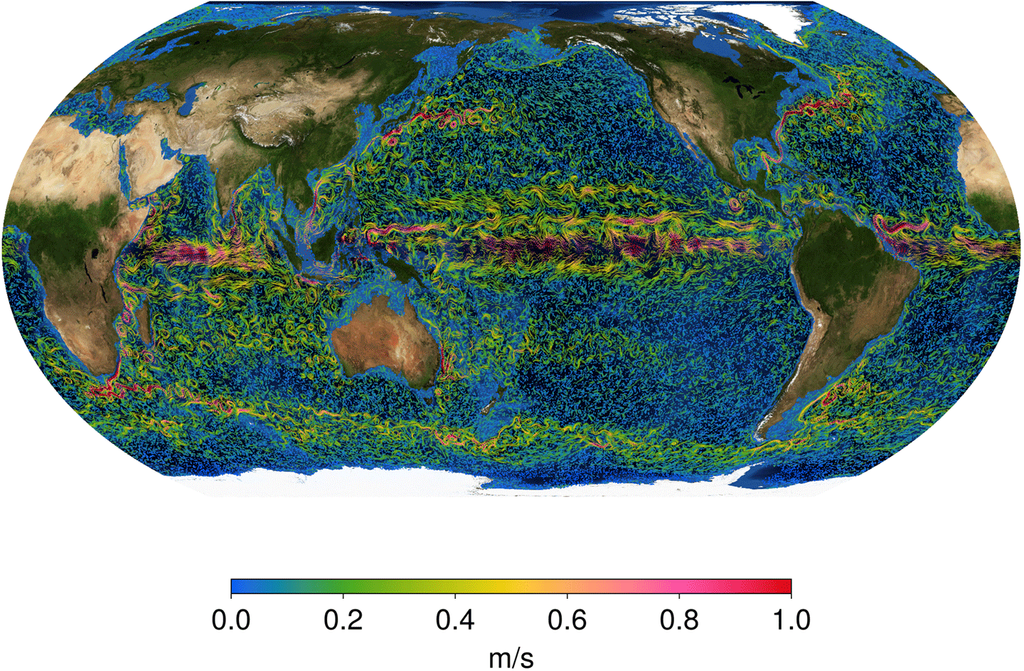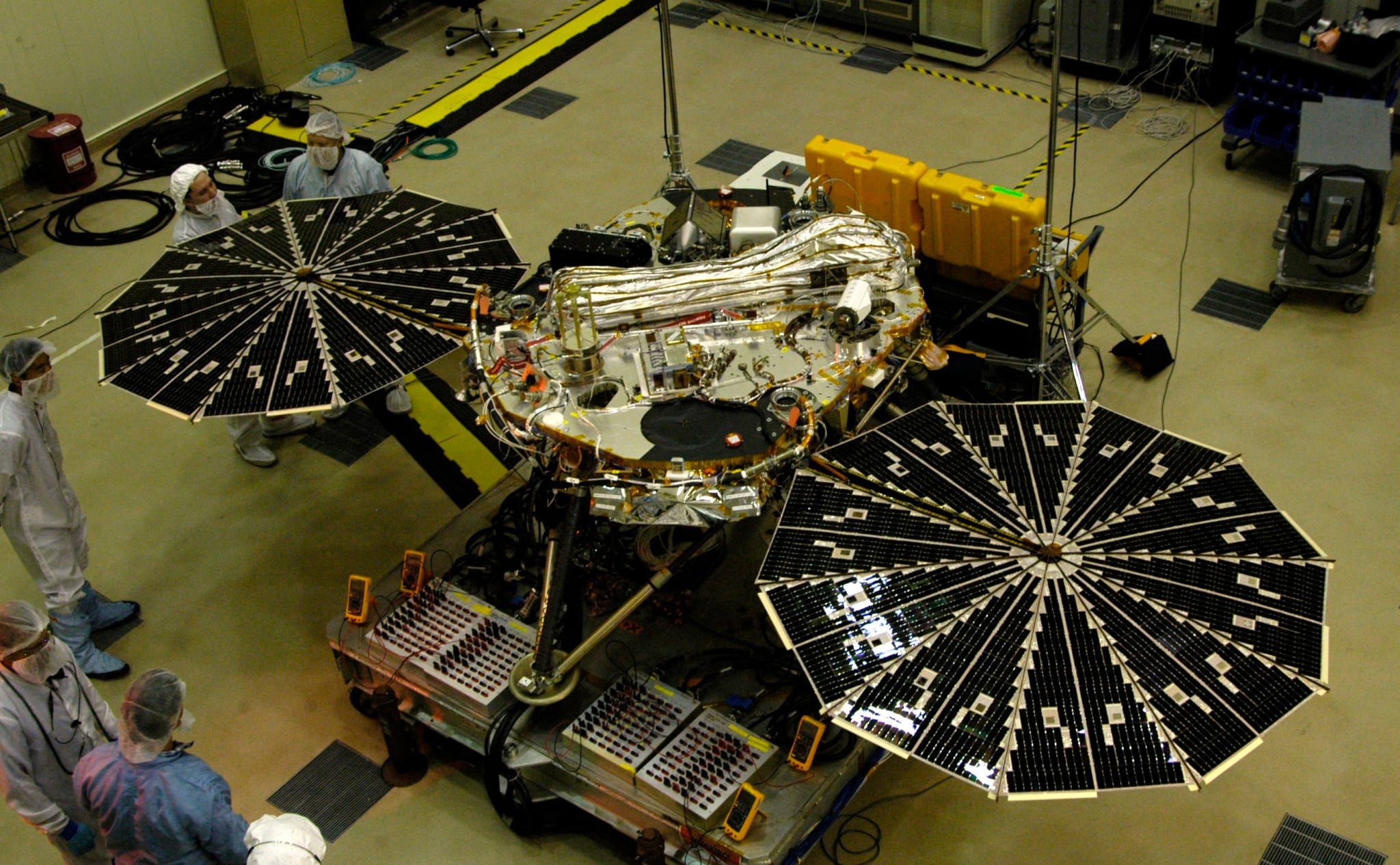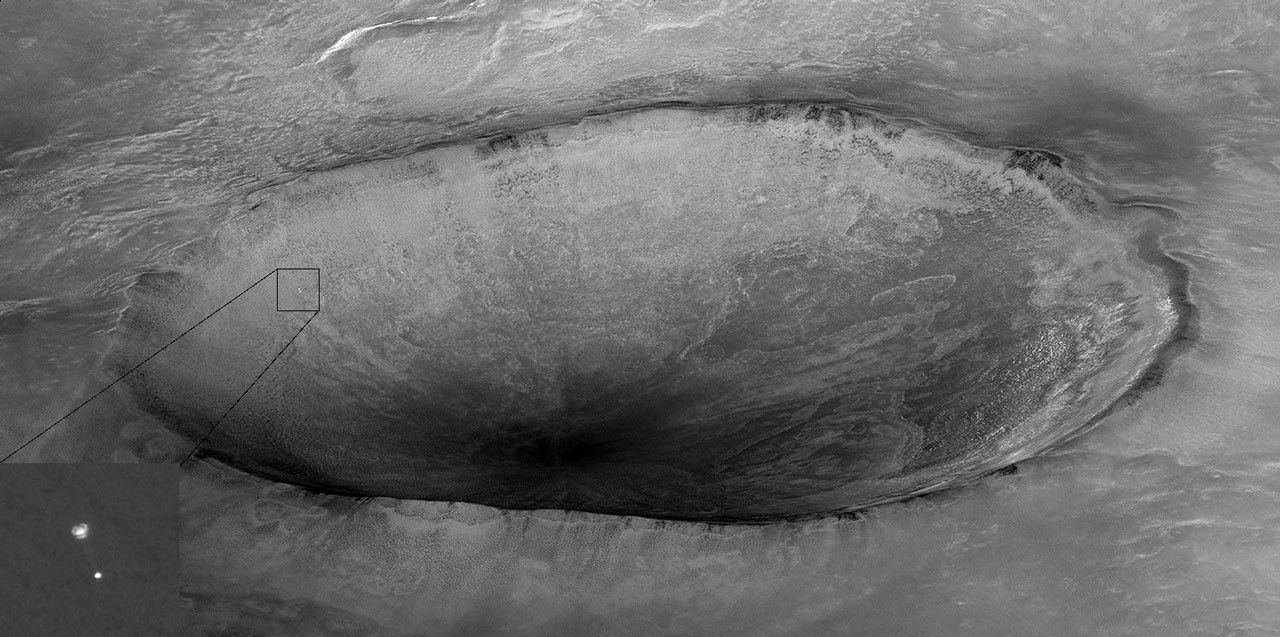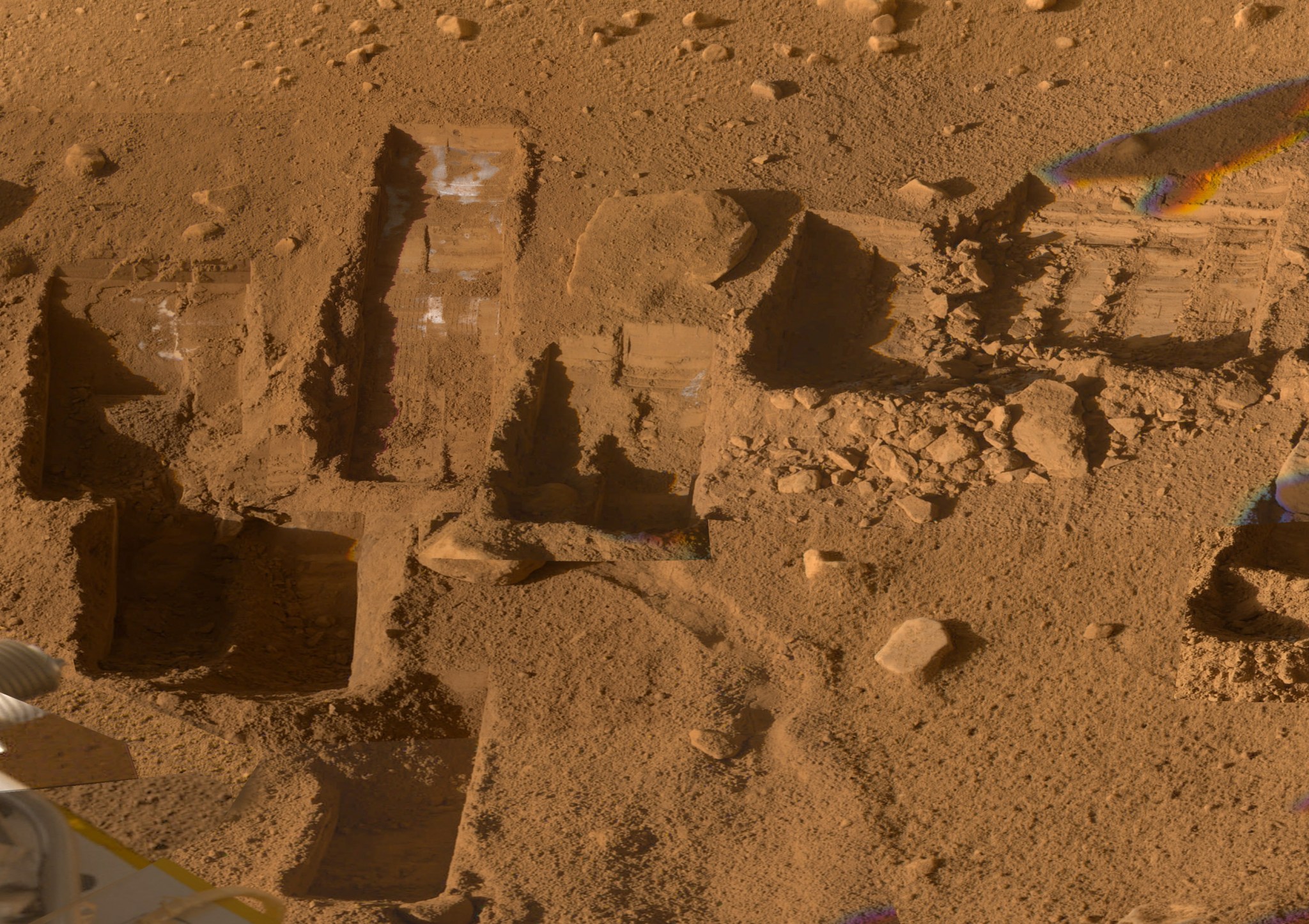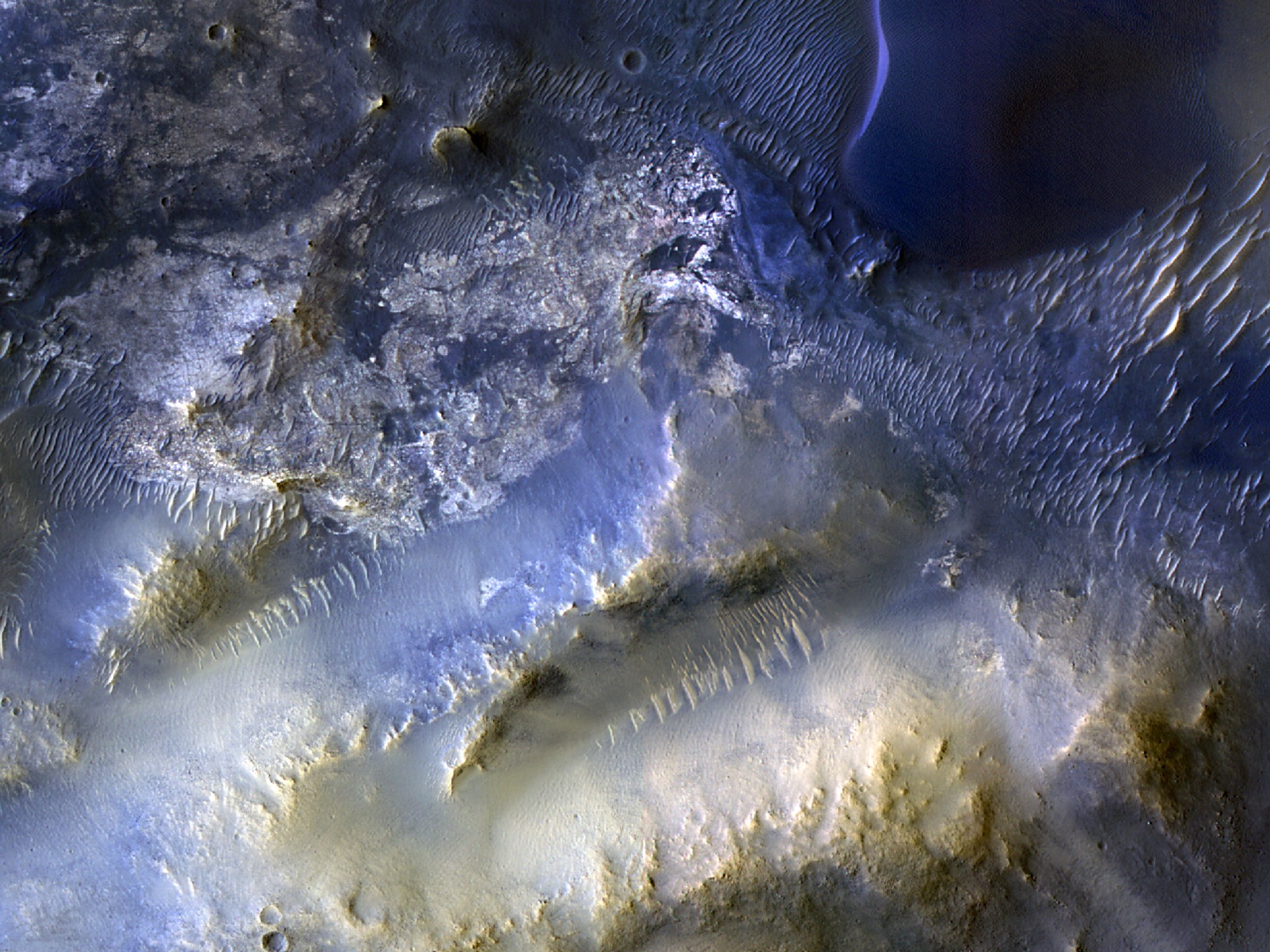Mars Phoenix
Mission Type
Launch
Destination
Objective
Overview
Phoenix entered the Martian atmosphere at nearly 13,000 miles per hour (21,000 kilometers per hour) on May 25, 2008, and touched down safely on the surface at 23:38:38 UT in the Green Valley of Vastitas Borealis. It was the first successful landing of a stationary soft-lander on Mars since Viking 2 about 32 years earlier.
During its descent, Mars Reconnaissance Orbiter’s HiRISE camera clearly photographed Phoenix suspended from its parachute, the first time one spacecraft photographed another during a planetary landing.
Objective
The Mars Phoenix lander was designed to uncover the mysteries of the Martian arctic, studying the history of water and searching for complex organic molecules. In the continuing pursuit of water on Mars, the polar regions are a good place to probe, as water ice is found there. Phoenix landed farther north than any previous mission, at a latitude equivalent to that of northern Alaska.
Quick Facts
Launch: August 4, 2007 UTC
Launch Vehicle: Delta II
Launch Locations: Cape Canaveral Air Force Station, Florida
Landing: May 25, 2008
Landing Site: Vastitas Borealis, the arctic plains of Mars
End of Mission: Nov. 2, 2008
Spacecraft and Science
To analyze soil samples collected by its robotic arm, Phoenix carried tiny ovens and a portable laboratory. Selected samples were heated to release volatiles that were examined for their chemical composition and other characteristics.
Phoenix's stereo camera, located on its 2-meter (6.6-foot) mast, used two "eyes" to reveal a high-resolution perspective of the landing site's geology. It also provided range maps for the team's use in choosing where to dig. Multi-spectral capability enabled the identification of local minerals.
To update our understanding of Martian atmospheric processes, Phoenix also scanned the atmosphere up to 12.4 miles (20 kilometers) in altitude, obtaining data about the formation, duration and movement of clouds, fog, and dust plumes. It also carried temperature and pressure sensors.
Science Instruments
- Surface Stereo Imager (SSI)
- Robotic Arm Camera (RAC)
- Microscopy Electrochemistry and Conductivity Analyzer (MECA)
- Thermal and Evolved Gas Analyzer (TEGA)
- Meteorological Station (MET)

Science Highlights
Besides verifying the existence of water-ice in the Martian subsurface, Phoenix discovered traces of the chemical perchlorate, a possible energy source for microbes and a potentially valuable future resource for human explorers.
During the course of its three-month mission, Phoenix dug into an ice-rich layer near the surface. It checked samples of soil and ice for evidence about whether the site was ever hospitable to life. The lander waited 15 minutes for the dust to settle before unfurling its solar panels. The first images showed a flat surface marred by pebbles and troughs, but no large rocks or hills as expected, given its northern position. Within four days, Phoenix had transmitted a complete 360-degree panorama of the cold Martian surface, deployed the nearly 8-foot (2.5-meter) robotic arm, and started returning regular weather reports.
On May 31, the robotic arm scooped up dirt and began sampling Martian soil for ice. By June 19, mission scientists were able to conclude that clumps of bright material in the “DodoGoldilocks” trench dug by the robotic arm were probably water ice – the material had vaporized four days after the scoop.
On July 31, NASA officially announced that there is water on Mars, based on a sample collected by the lander, and analyzed by the Thermal and Evolved Gas Analyzer instrument, or TEGA. William Boynton of the University of Arizona noted that such data added to the data from the 2001 Mars Odyssey orbiter.
On Aug. 5, the Phoenix team announced that they had found perchlorates on the surface of Mars that neither confirmed nor refuted the possibility of life on Mars. The results also led scientists to revisit the data from the Viking landers.
By the end of August, Phoenix had completed its originally planned 90-day mission, which was extended to Sept. 30. On Sept. 12, the lander scoop delivered a new soil sample to its wet chemistry laboratory, which mixed an aqueous solution from Earth to the soil – part of a process to identify soluble nutrients and other chemicals in the soil. Early results suggested that the soil was alkaline, composed of salts and other chemicals such as perchlorate, sodium, magnesium, chloride, and potassium.







